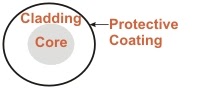Warping:
Warping is a
process in which number of the yarns end from the yarn packages or cones are
wound on the warping beams.
Or
Warping is
transferring many yarns from a creel of the single end package forming a
parallel sheet of the yarn wound on to a beam.
Objectives of the warping:
The object of warp preparation is to
transfer yarn from the spinner's package to a weaver's beam that can be placed
behind a loom ready for weaving. A weaver's beam usually contains several
thousand ends and for a variety of reasons, it can seldom be made in one
operation.
There are two main objective of the
warping
Ø
Collection
of the number of the yarns end required in the fabrics
Ø
Winding
a specific type of the package as required by subsequent process i.e. warper’s
beam or ball etc
Types of the warping:
There are three common types of the
warping
Ø
High
speed warping (Direct warping)
Ø
Section
warping (Indirect warping)
Ø
Ball
warping
High Speed Warping:
In
this system single end of the yarn from the cones or packages are directly
wounded on the warping beams. This is
the winding of total number of warp ends in full width in a single operation
from creeled bobbin.
This process or
system is used for the mass production. This is
used to make smaller intermediate beams called warper’s beams. These
smaller beams are combined later at the sizing stage to produce the
weaver’s beam. This process is called beaming. Therefore, for if the
weaver’s beam contains 10,000 warp ends, then there would be-say –
10 warper’s beams of 1,000 ends each. If this weaver’s were to be made in
one stage, the creel would have to have 10,000 yarn packages, which
is impossible to manage.
Section
of High Speed Warping:
Ø Creel
Ø Warp Break
Sensor
Ø Expanding comb
Ø Pressure roller
Ø Beam
Section Warping:
In
the section warping, first the yarn ends from the creel are wounded on the
warping section beams which are winding section. After this, this section yarn
are then wounded on the warping beams. Then the warping beams without sizing
are applied to the loom to produce the grey fabrics. This system takes time so
the production will not so good. It is clear from the above it is two step
processes.
Feature
of Sectional Warping:
Ø
This is suitable for making checked,
stripped or other fancy fabric.
Ø
Fabrics
which don’t required sizing
Ø
Fabric
with strip of different colors or different type of yarns
Ø
Less
no of ends of warp in the sheet
Ø
The production is less in sectional
warping
Ø
It is less efficient than high speed
warping
Where length of the warp are
comparatively small as this is slow speed process and can’t coup up with mass
production orders.
Ball Warping:
In
this system the large no the strands of the yarn of specific length in the form
of loose untwist rope are wounded.
This system is mainly used when the yarn
is dyed for denim fabrics. This rope consists of the 50 to 100 yarns. Such a
beam is termed as ball. After the dying process the rope ends are again
separated and wound on another warping beams (long chain beaming). Warp beam so
produced are then combined on the sizing machine for applying the size and then
wound on a weaver’s beams.
Machine of warping:
There are two main parts of the machine
of the warping:
Ø
Creel
Ø
Head
Stock
Creel:
The creel is a structure which is used to hold the cones on the spindle.
Creel structure:
Spindle:
Spindle
is a part of a machine around which cone turns at the time of withdrawal of
yarn or place for supply package.
Pegs:
This is used to hold the cones on the creel
Guides:
Guides are a component for controlling the path of a running material.
Tensioners:
This is device which is use the keep the strength in warp yarn constant.
Stop motion pins.
Creel capacity:
Creel capacity depend upon the
Ø
No
the rod of the creel
Ø
No
the spindles that holds the cones on the creel
Types of the creel:
There are two type of creel according to
the shape:
Ø
V-Shape
Creels
Ø
H-Shape
Creels
Ø
Mobile
Creels
Ø
Magazine
Creel
Ø
Swivel
Frame Creel
Differences
between Sectional and High Speed Warping
|
High Speed Warping
|
Sectional Warping
|
|
1. Beam warping is
used for long runs of grey fabrics & simple pattern.
|
1. Sectional warping is used for
short runs especially for fancy pattern fabrics.
|
|
2. The amount of colored yarn is
less than 15% of the total.
|
2. Greater amount of colored yarn
is used.
|
|
3. High production.
|
3. Low production.
|
|
4. Large amount of yarn required.
|
4. Small amount of yarn required.
|
|
5. Single yarn is used.
|
5. Twisted yarn is used.
|
|
6. Less expensive.
|
6. More expensive.
|
|
7. It is most widely used for
cotton, linen, woolen & worsted yarn.
|
7. It is most widely used for cotton,
silk & synthetic yarn.
|
|
8. Uniform tension of yarn.
|
8. Less uniform tension of yarn.
|
|
9. Weavers beam is produced after
sizing.
|
9. Weavers beam is produced after
warping.
|
|
10. Creel capacity is more.
|
10. Creel capacity is less.
|
|
11. Beam warping is more widely
used.
|
11. Sectional warping is not
widely used.
|



